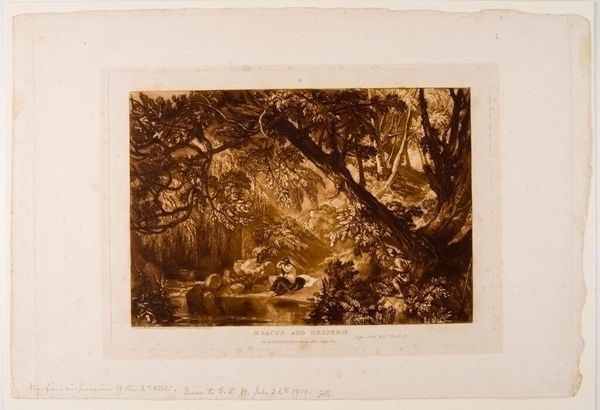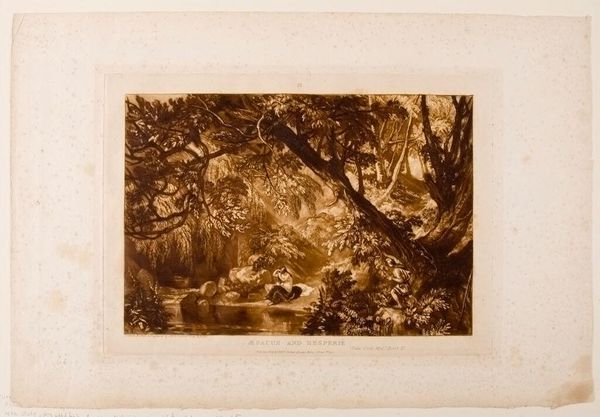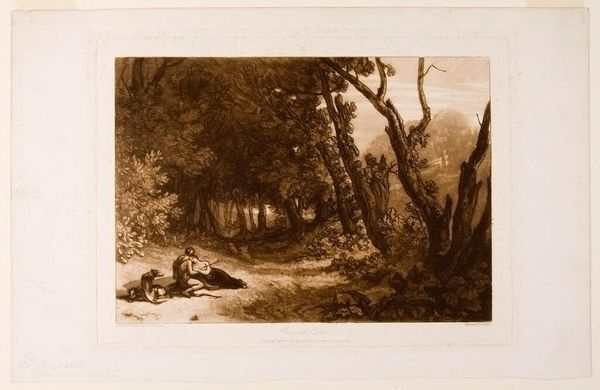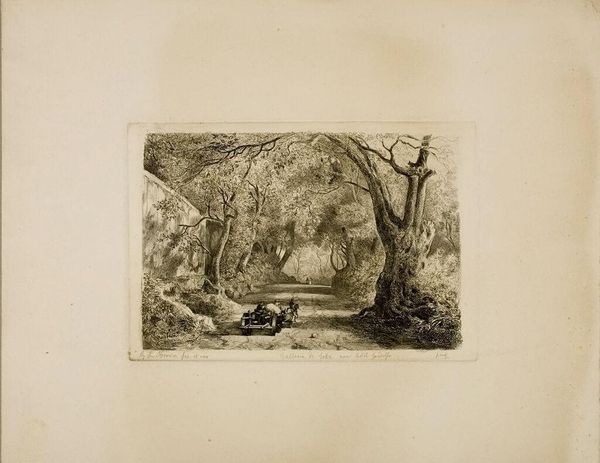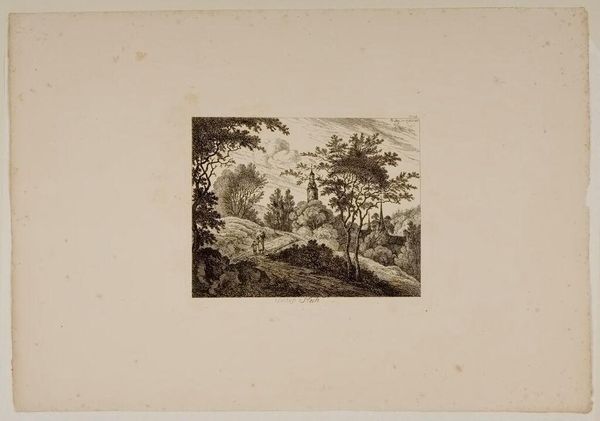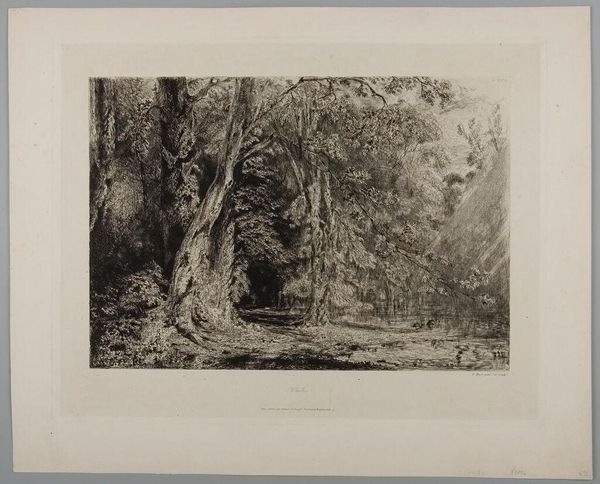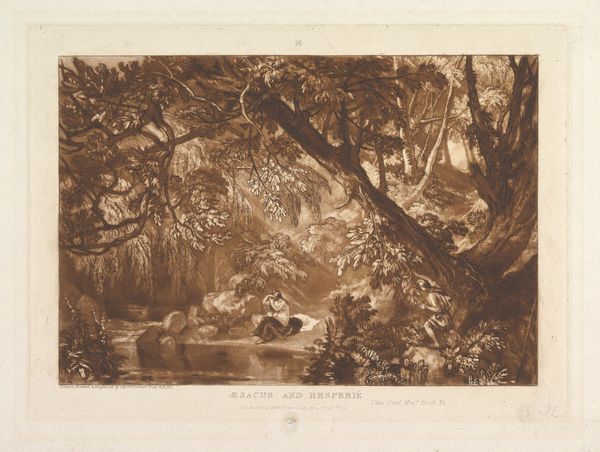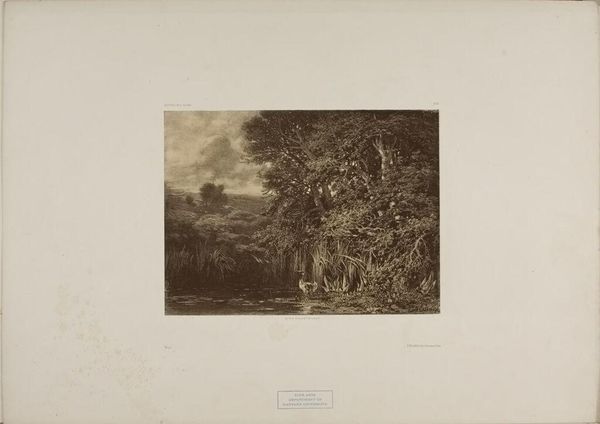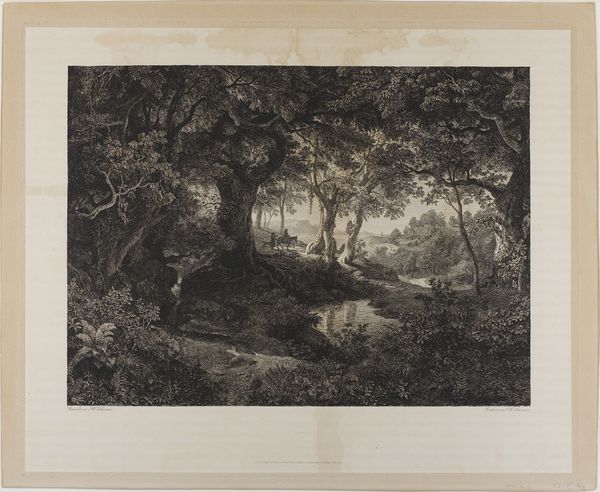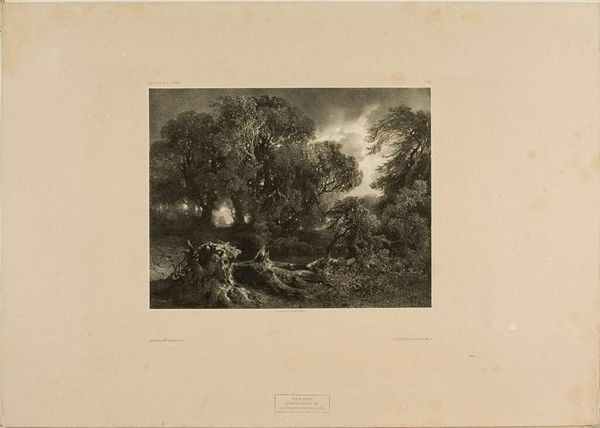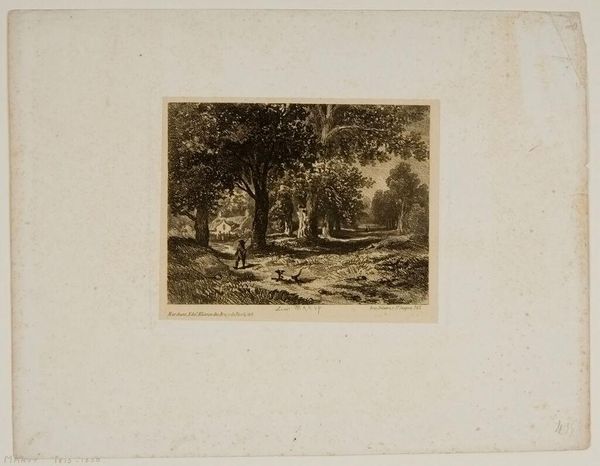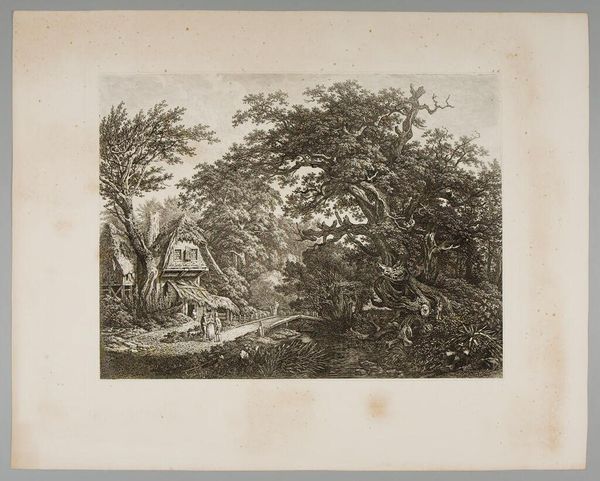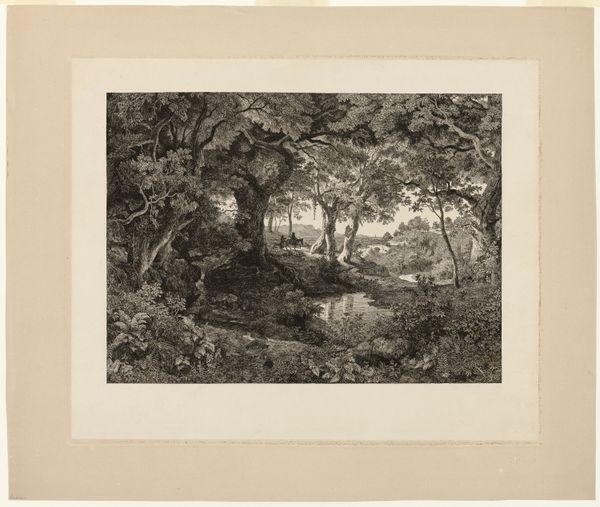
Copyright: CC0 1.0
Curator: Turner's "AEsacus and Hesperie" presents a landscape imbued with classical myth. The sepia tones evoke a sense of timelessness, almost like an antique memory. Editor: There's something almost claustrophobic about the density of the foliage, isn't there? It's all so tactile; you can almost feel the weight of the ink on the paper. Curator: The choice of this myth is fascinating; the ill-fated love speaks to the transience of beauty and the inevitability of loss, recurring motifs throughout art history. Editor: And considering the printmaking process itself – the careful layering, the controlled bite of acid on the plate – doesn't that also reflect the fragility and fleeting nature of existence? Curator: Precisely. Turner uses the myth as a vehicle to explore these profound human experiences, anchoring it in our shared consciousness. Editor: Seeing the material reality of its production, the labor involved, deepens that connection for me. The hand that guided the tool matters. It makes it all the more resonant.
Comments
No comments
Be the first to comment and join the conversation on the ultimate creative platform.
